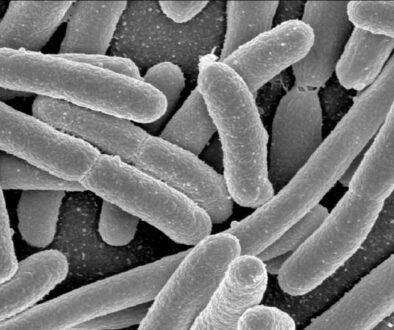FLUORIDE AS A NEUROTOXIN: HOW IT HARMS YOUR BRAIN
Fluoride is a trace mineral that, in sufficient quantity, is harmful to mental health. Consider these reasons to avoid fluoridated water and toothpaste.
Fluoride is a trace mineral that naturally occurs in Earth’s crust and in water.
About 6% of the world’s population, including about 75% of the US, drink artificially fluoridated water.
Fluoride added to water and toothpaste is a public health measure thought to prevent dental decay and build healthy teeth.
However, artificially adding fluoride to drinking water is a controversial practice.
FLUORIDATION AND MENTAL HEALTH
The US Centers for Disease Control calls the fluoridation of water “one of 10 great public health achievements of the 20th century.”
On the other hand, PubChem, a US National Institutes of Health’s chemistry database, considers fluoride toxic and lists over 20 diseases and disorders associated with fluoride, including learning disabilities, memory disorders, and sleep disorders.
There’s reason to doubt that fluoridated water prevents tooth decay since people in pro-fluoride countries don’t have healthier teeth than the rest of the world.
Many countries have actually experienced a substantial decline in cavities without the use of fluoride.
But there’s little debate about what fluoride, a known neurotoxin, does to your brain.
Here are some of the best reasons to consider avoiding added fluoride for the sake of the health and function of your brain.
1. FLUORIDE IS A DEVELOPMENTAL NEUROTOXIN
A neurotoxin is a substance that’s poisonous or otherwise destructive to the tissues in the brain, spinal cord, and nervous system.
A developmental neurotoxin is one that affects the brain during the most susceptible stages of life — before birth and during early childhood.
A systematic review of studies published in The Lancet, one of the most prestigious medical journals, recommended that fluoride be classified as a developmental neurotoxin.
This would put fluoride in the same category as lead, mercury, arsenic, PCBs, and toluene.
“ Fluoridated water leaches lead and greatly increases the amount of lead in potable water, by up to 9-fold.
Study authors noted their belief that there is a “pandemic of developmental neurotoxicity” and that fluoride is a contributor.
Developmental neurotoxins are linked to increases in attention deficit hyperactivity disorder (ADHD), dyslexia, loss of IQ points, disruptive behavior, and other cognitive impairments.
There’s also a suspected link between increases in autism and chronic fluoride exposure.
2. THE INGESTION OF FLUORIDE LOWERS IQ IN CHILDREN
Harvard School of Public Health and China Medical University performed a joint analysis of 27 studies on the effects of fluoride.
Researchers found a strong correlation between fluoride and adverse effects on brain development.
Children exposed to fluoride prenatally have been found to have lower IQ scores as have children who live in high-fluoride areas.
Related on Be Brain Fit —
5 Neurotoxins Found in Popular Foods
To date, more than 70 human studies have linked fluoride to reduced IQ in both children and adults.
You can find a list of these studies on the Fluoride Action Network, a registered non-profit organization.
3. FLUORIDE FACILITATES THE ENTRY OF ALUMINUM INTO THE BRAIN
In the 1970s, autopsies revealed that Alzheimer’s patients had higher than normal concentrations of neurotoxic aluminum in their brains.
It’s now understood that fluoride may play a role in the aluminum-Alzheimer’s connection.
The blood-brain barrier is a semipermeable membrane designed to keep foreign substances — like fluoride and aluminum — out of the brain.
However, when aluminum comes into contact with fluoride, it hitches a ride into the brain as aluminum fluoride, bypassing the blood-brain barrier.
The presence of aluminum fluoride in the brain has been strongly linked to Alzheimer’s for decades.
4. FLUORIDATED DRINKING WATER INCREASES RISK OF HYPOTHYROIDISM
Fluoride, especially when added to drinking water, nearly doubles the risk of developing hypothyroidism (underactive thyroid).
Fluoride binds with iodine receptors in the thyroid, displacing iodine.
And, when there isn’t adequate iodine available, the thyroid can’t synthesize thyroid hormones.
That is bad news for the brain.
Brain fog, memory loss, lack of focus, depression, anxiety, and other cognitive and mental health issues are some of the most problematic side effects of thyroid disorders.
5. FLUORIDE CAUSES NERVOUS SYSTEM DEGENERATION
Once fluoride crosses the blood-brain barrier, it causes degeneration in certain regions of the brain, specifically the hippocampus, neocortex, and cerebellum.
The hippocampus is considered the seat of memory and is critical for learning, emotional regulation, and turning off the stress response.
The neocortex is considered the most evolved area of the brain; it’s where the brain processes sensory perception, conscious thought, and language skills.
The cerebellum is responsible for coordination and balance.
The damage from fluoride doesn’t stop at your brain; it continues on to the spinal cord and sciatic nerve.

6. FLUORIDE IMPAIRS PINEAL GLAND FUNCTION
The pineal gland is a pea-sized structure in the brain where melatonin is produced.
Melatonin is known mainly as a sleep hormone, but it’s much more than that.
Melatonin is a potent antioxidant that is especially protective of the brain.
It can offset the damage of serious brain disorders, including dementia and Alzheimer’s.
It may even help you live longer.
Melatonin has been shown to work at least as well as antidepressant medications and is particularly useful for a kind of depression known as seasonal affective disorder (SAD).
The pineal gland is susceptible to accumulating calcium deposits in a process known as calcification.
Pineal gland calcification has been linked to mild cognitive impairment, dementia, and Alzheimer’s.
The pineal gland is prone to accumulating fluoride, a gland in which fluoride is found in strikingly high concentrations.
This affects melatonin production, contributing to insomnia, depression, and accelerated brain aging.
7. FLUORIDATED WATER LEACHES LEAD FROM PIPES AND FAUCETS
If you are of a certain age, you may remember when paint, gasoline, and water pipes regularly contained lead.
Lead is another neurotoxin that posed a serious health threat, leading to a series of bans in the US.
Lead has been banned from paint since 1978, phased out of gasoline since the 1990s, and outlawed in the manufacture of water pipes since 1986.
But if you live in a house built after 1986, you might still consume lead from your tap water since brass or chrome-plated faucets can contain some lead.
And, depending on where you live, the main water lines to your home may be much older.
Some US cities still use water mains installed before the Civil War!
Fluoridated water coming through lead pipes and chrome faucets creates the “perfect neurotoxin storm” since fluoridated water leaches lead and greatly increases the amount of lead in your water, by up to 9-fold.
Young brains are most at risk, but brains of all ages can suffer from lead exposure that manifests as memory loss, mood disorders, lower IQ, and learning disabilities.
8. ATTENTION DISORDERS ARE LINKED TO FLUORIDE
Rates of attention disorders have skyrocketed during the same time that fluoridation of water supplies has been on the rise in the United States.
This may not be a coincidence since researchers have found a correlation between water fluoridation and attention deficit hyperactivity disorder (ADHD).
States with the largest number of ADHD cases also have the greatest proportion of people drinking fluoridated water.
According to the Centers for Disease Control, 73% of the US population receives fluoridated water, but the numbers vary greatly by state.
If you live in Washington, DC, the chances of fluoridated water coming out of your tap are 100%.
States with the lowest rates of fluoridation are Hawaii at 11% and New Jersey at 15%.
9. FLUORIDE IS FOUND IN ANTIDEPRESSANTS
If you are one of the millions of people taking Prozac, you may have noticed that the generic name for Prozac is fluoxetine.
It’s not a coincidence that the name sounds a lot like fluoride.
Some of the most commonly prescribed drugs contain significant amounts of fluoride, including antidepressants and anti-anxiety drugs.
This is disturbing since there’s evidence that fluoride can cause depression and anxiety.
Besides Prozac, other antidepressants that contain fluoride include Paxil, Celexa, and Lexapro.
If you currently take one of these medications, you may want to discuss switching to a fluoride-free antidepressant with your doctor or try some natural ways to relieve depression instead.
But do not stop taking any medication before talking to your healthcare professional.
HOW TO AVOID ADDED FLUORIDE
For most of us, the main sources of fluoride are toothpaste and drinking water.
Here’s how to avoid fluoride from each.
A HIGH-TECH ALTERNATIVE TO FLUORIDE TOOTHPASTE
It’s easy to find fluoride-free toothpaste.
Many “natural” personal care companies sell fluoride-free toothpaste.
But even better is to switch to a toothpaste that contains nano-hydroxyapatite, which studies show fights cavities and remineralizes teeth better than fluoride.
Surprisingly, hydroxyapatite is not new.
It was first developed by NASA to protect astronauts’ teeth in the 1970s and has been commercially available in Japan since 1980.
The brand we use is Boka, which you can easily buy online.
But avoiding fluoride in your drinking water is a bit more complicated.
The first question to answer is …
DOES YOUR DRINKING WATER CONTAIN FLUORIDE?
Some countries, including the US, Canada, Australia, Ireland, and Brazil, add fluoride to much of their public water supply.
If you live in one of these countries, you may be surprised to learn that most of the world does not fluoridate its water.
It’s estimated that less than 6% of the world’s population drinks artificially fluoridated water.
On the other hand, many parts of the world have groundwater with naturally high fluoride concentrations that can reach dangerous levels.
These areas are known as “fluoride belts” and include parts of Africa, China, India, and the Middle East.
People who live in these areas are at risk for dental fluorosis, which stains and pits teeth, and skeletal fluorosis, a crippling bone disease.
If you live in the US, you can easily determine if your water is fluoridated at the Centers for Disease Control’s interactive webpage My Water’s Fluoride.
Or you can contact your local water department directly since this information is required by law to be available to the public.
If you have a well, you can download the government report Quality of Water from Domestic Wells to check whether fluoride levels are high in your area.
GET A FLUORIDE-REDUCING WATER FILTER
Whether your water is fluoridated or naturally high in fluorides, it’s possible to filter fluoride from your water.
But be aware that very few water filters reliably remove fluoride.
Some claim “fluoride reduction” as a feature but, in fact, remove negligible amounts.
If a filter does not specifically state that it removes fluoride, assume that it doesn’t.
CHECK YOUR MEDICATIONS
One final way to minimize added fluoride is to check your medications.
Besides antidepressants, other medications that can contain fluoride include antacids, antibiotics, antihistamines, and anti-inflammatories.
Truth About Fluoride lists over 300 drugs that contain fluoride.
You can also talk to your pharmacist if you are concerned about any medication you are taking.
Recommended: Upgrading brain health is key to making your brain work better.
Mind Lab Pro is the brain supplement I recommend because, by boosting your brain health, it can help you:
- Improve your mental clarity and focus.
- Boost your memory and your ability to learn.
- Increase your capacity to think critically, solve problems, and make decisions.
DA



